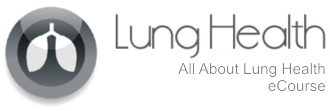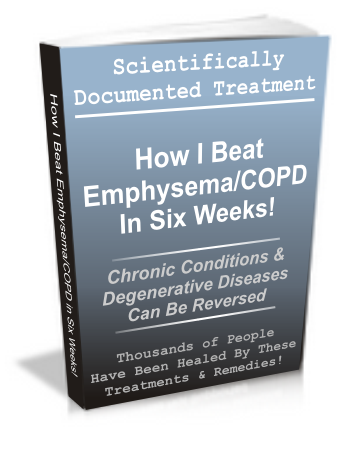
Lesson 6: What Is Emphysema?
Emphysema is one of the two major forms of COPD. It results when the alveoli are damaged. Those are the tiny sacs in the lung that exchange oxygen into and carbon dioxide out of the blood.
Picture the airways and lungs as an upside down tree, with a trunk (trachea or windpipe), branches (bronchi), twigs (bronchioles), and leaves (alveoli). Air flows into the trunk, passing progressively down until it reaches the alveoli. Under normal circumstances, O2 moves in and CO2 moves out.
But cigarette smoke, industrial chemical exposure, and other irritants can damage the walls of the small sacs, reducing the efficiency of the gas exchange. Emphysema makes the alveoli lose elasticity as inflammation sets in. The sacs become less effective at emptying air because they don’t contract far enough. That leaves gas trapped inside them.
Since that gas now has less O2 and more CO2, it doesn’t supply the blood with needed fresh oxygen and clear out the old carbon dioxide as much. Also, it takes up space that would be occupied by incoming oxygen-rich air. The net result is a feeling of shortness of breath (dyspnea), especially under mild exertion.
Tragically, the disease is often progressive. More and more alveoli enlarge, making them less elastic. A healthy lung will have about 300 million of these tiny sacs, but emphysema will, over time, reduce that by 30-50% or more.
As that gas exchange capacity is reduced, an individual has to exert increasing effort to expel air, to take in fresh oxygen and release CO2. The effort itself becomes increasingly uncomfortable. At the same time, because the body has less oxygen, fatigue sets in sooner than normal under conditions of moderate activity.
A chronic cough is common but not always present. It can easily be confused as a sign of chronic bronchitis, a disease that often occurs in conjunction with emphysema. In the case of emphysema, it much less often produces phlegm. Even here, though, because both forms of COPD make a person more vulnerable to lung infections because of the tendency to retain excess mucus, either may produce a yellow-green sputum as a secondary effect.
Since oxygen is required for all muscular activity, even eating may become difficult. Also, while eating, breathing is reduced. When a person eats, the stomach expands, pushing up the diaphragm (the major muscle used to expand the lungs). That compresses the lungs, making it harder to breathe.
There is no cure for emphysema, but there are activities that can help compensate.
Breathing exercises emphasize methods for optimizing airflow. For example, something as simple as pursing the lips during exhaling can help. That technique creates a small resistance to the outflow of air. That in turn increases slightly the air pressure on the airways, keeping them as open as possible.
Another simple technique alters the way you would naturally breathe. Because it takes longer for less elastic alveoli to expel air, short breaths in, followed by longer exhalations out can help maximize airflow. A variation involves holding your elbows back to arch your chest, then hold the inhaled air in for a few seconds. That is followed by forcing air out more strongly than normal and moving the elbows back to a natural position.
Of course, any diagnosis and treatment should be performed by a physician. He or she will perform a physical exam, followed up by a series of pulmonary function tests. If emphysema is suspected, a set of follow-on tests, such as a tissue exam after a biopsy, will generate a definitive diagnosis. On that basis, your doctor can recommend a treatment regime to help alleviate symptoms.
End of Lesson 6
To access the next lesson click its #/title in the right sidebar >>
The treatment Jim did is one of the world’s most scientifically demonstrated & documented alternative treatments. Healing successes by it have been documented thousands of times, even in mainstream medical journals, going back over 100 years. Yet, many doctors know little to nothing about it. This list of medical journals includes one of the most prominent, JAMA (The Journal of the American Medical Association).
This alternative & natural treatment Jim did is one of the most effective treatments for emphysema. It helps the body cleanse the cells and lungs …

 Are you ready to read Jim’s amazing full recovery story, the detailed natural program he did and thousands of others have done, and much more?
Are you ready to read Jim’s amazing full recovery story, the detailed natural program he did and thousands of others have done, and much more?
If you are, simply click on “BUY EBOOK NOW” at the top of this page. You can have your e-book downloaded to your computer and be reading it in only minutes from now!



